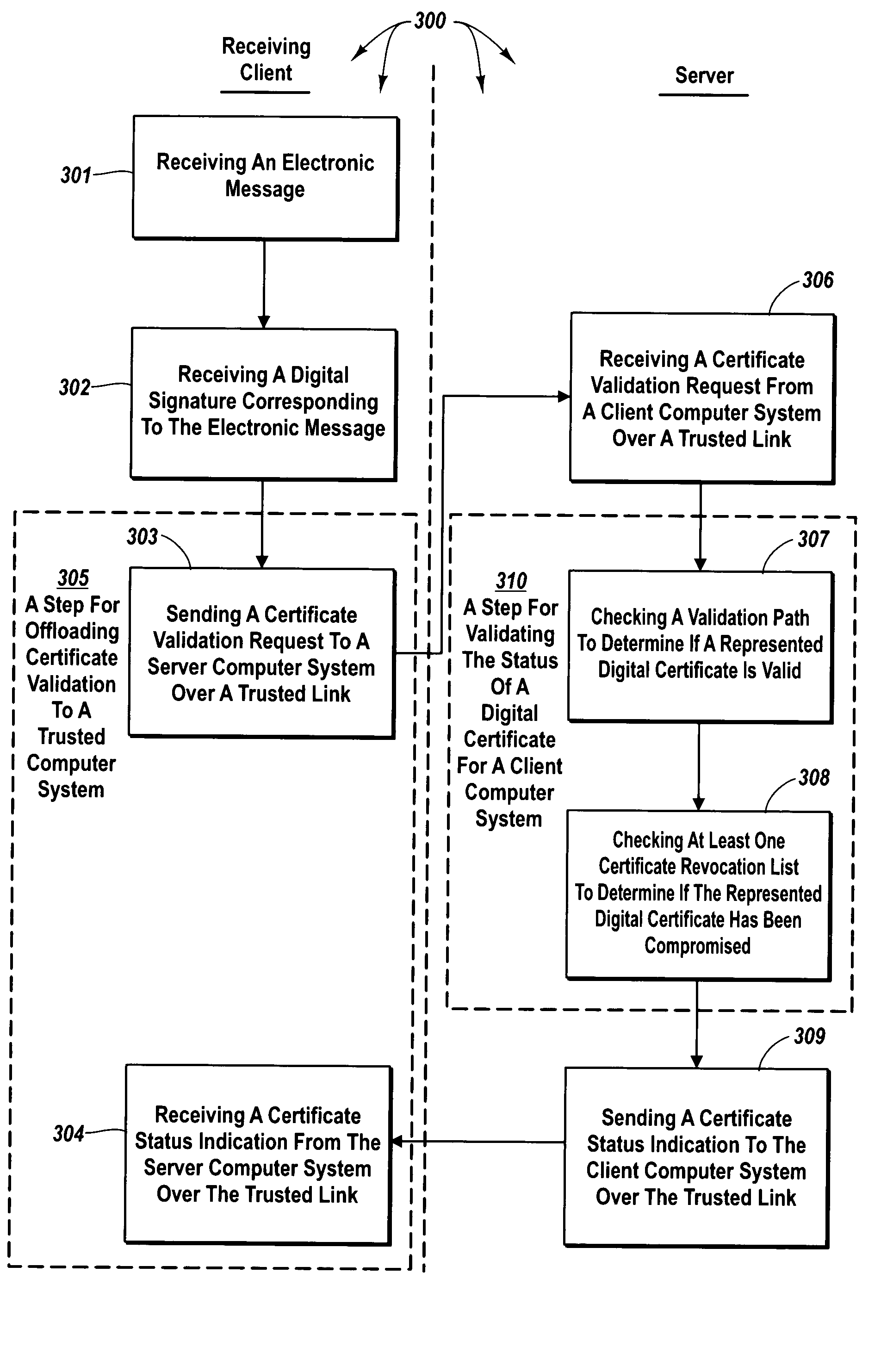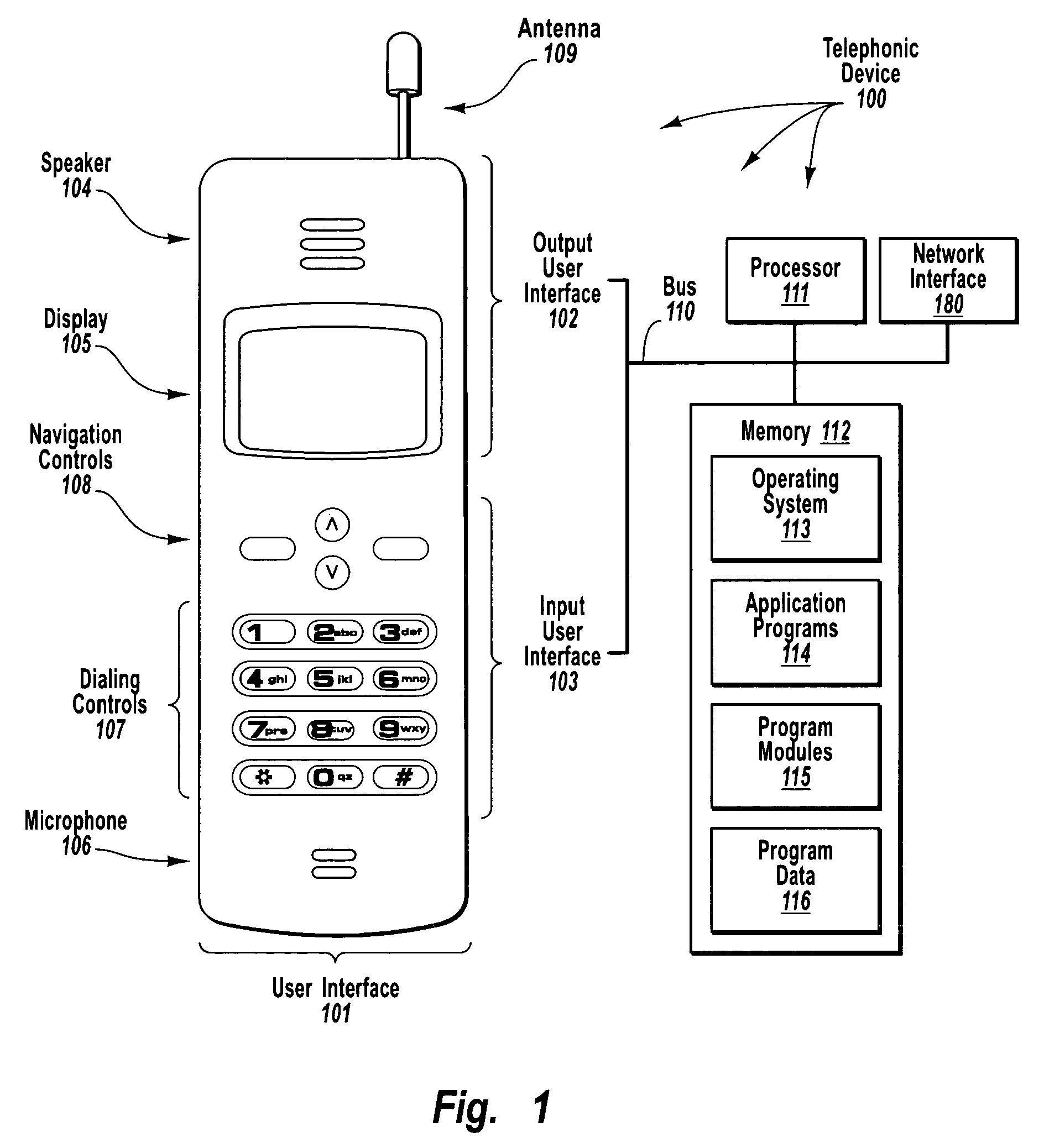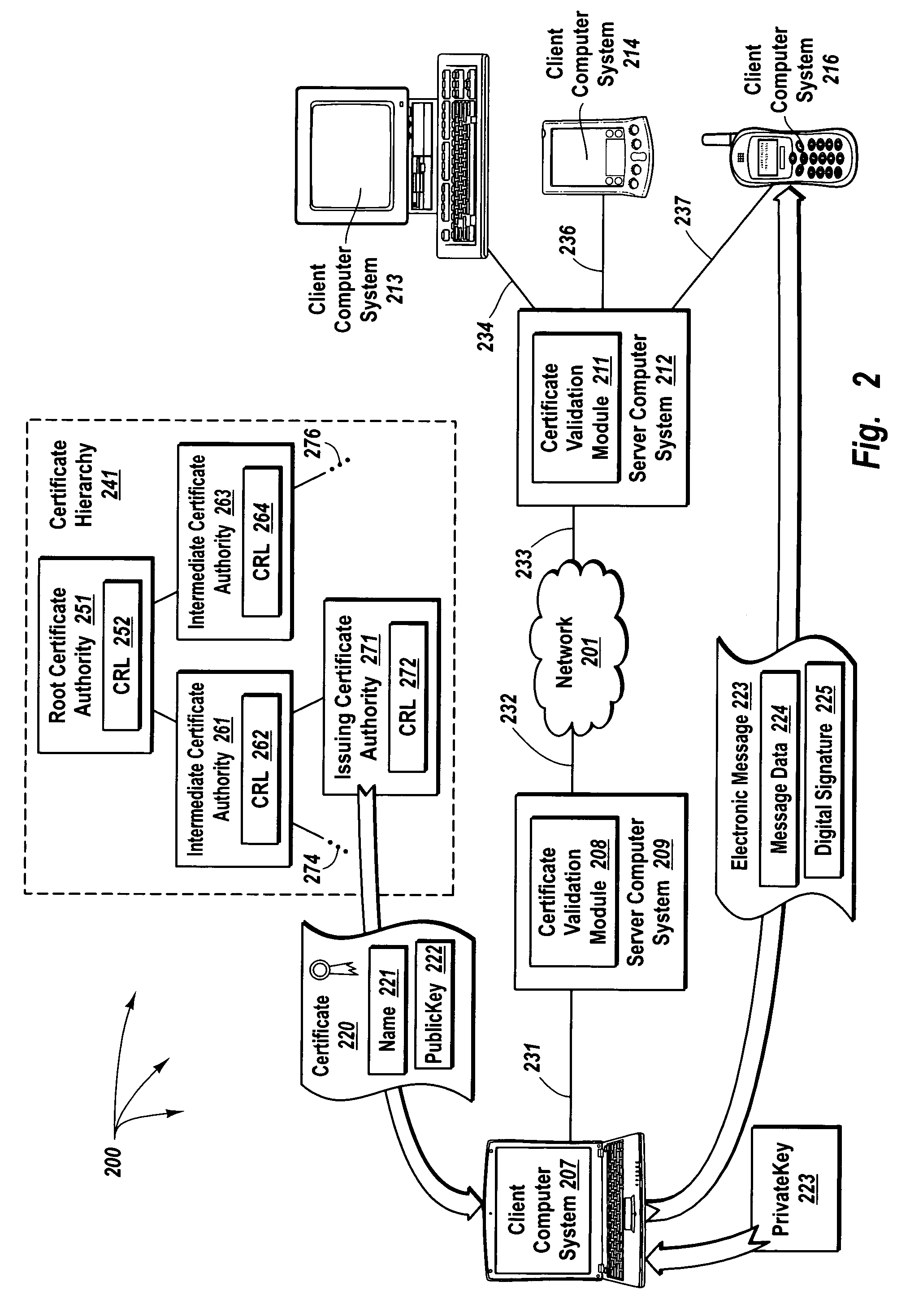Delegating certificate validation
a certificate validation and delegation technology, applied in the field of electronic messaging, can solve the problems of inacceptable risk, inability to authenticate and inability to detect and alter an electronic mail message by malicious users, so as to facilitate subsequent attempts to validate, the effect of efficient validation of the digital certifica
- Summary
- Abstract
- Description
- Claims
- Application Information
AI Technical Summary
Benefits of technology
Problems solved by technology
Method used
Image
Examples
Embodiment Construction
[0037]The principles of the present invention provide for delegating certificate validation. A client computer system sends a certificate validation request to a server computer system over a trusted connection. The certificate validation request includes at least enough certificate information for a certificate authority to identify a digital certificate that binds a sending entity to a private key. The server computer system checks a validation path to determine if the digital certificate is valid and checks for revocation to determine if the certificate has been compromised. The server computer system sends a certificate status indication to the client computer system over the trusted connection.
[0038]Thus, the resources of the server computer system, rather than the resources of the client computer system, are utilized to validate a digital certificate. Accordingly, a client computer system that lacks requisite resources or permissions or that is not configured to validate digit...
PUM
 Login to View More
Login to View More Abstract
Description
Claims
Application Information
 Login to View More
Login to View More - R&D
- Intellectual Property
- Life Sciences
- Materials
- Tech Scout
- Unparalleled Data Quality
- Higher Quality Content
- 60% Fewer Hallucinations
Browse by: Latest US Patents, China's latest patents, Technical Efficacy Thesaurus, Application Domain, Technology Topic, Popular Technical Reports.
© 2025 PatSnap. All rights reserved.Legal|Privacy policy|Modern Slavery Act Transparency Statement|Sitemap|About US| Contact US: help@patsnap.com



